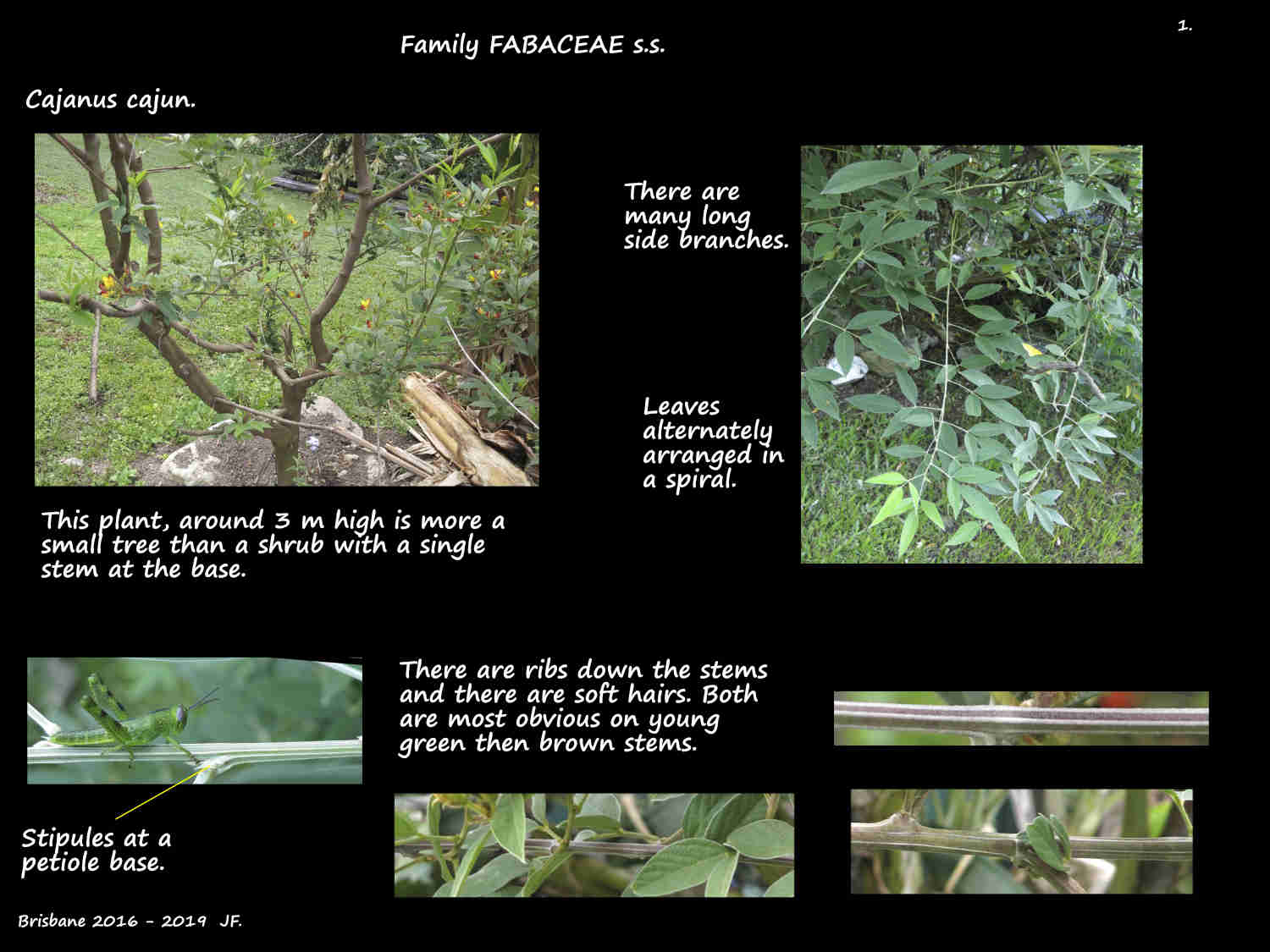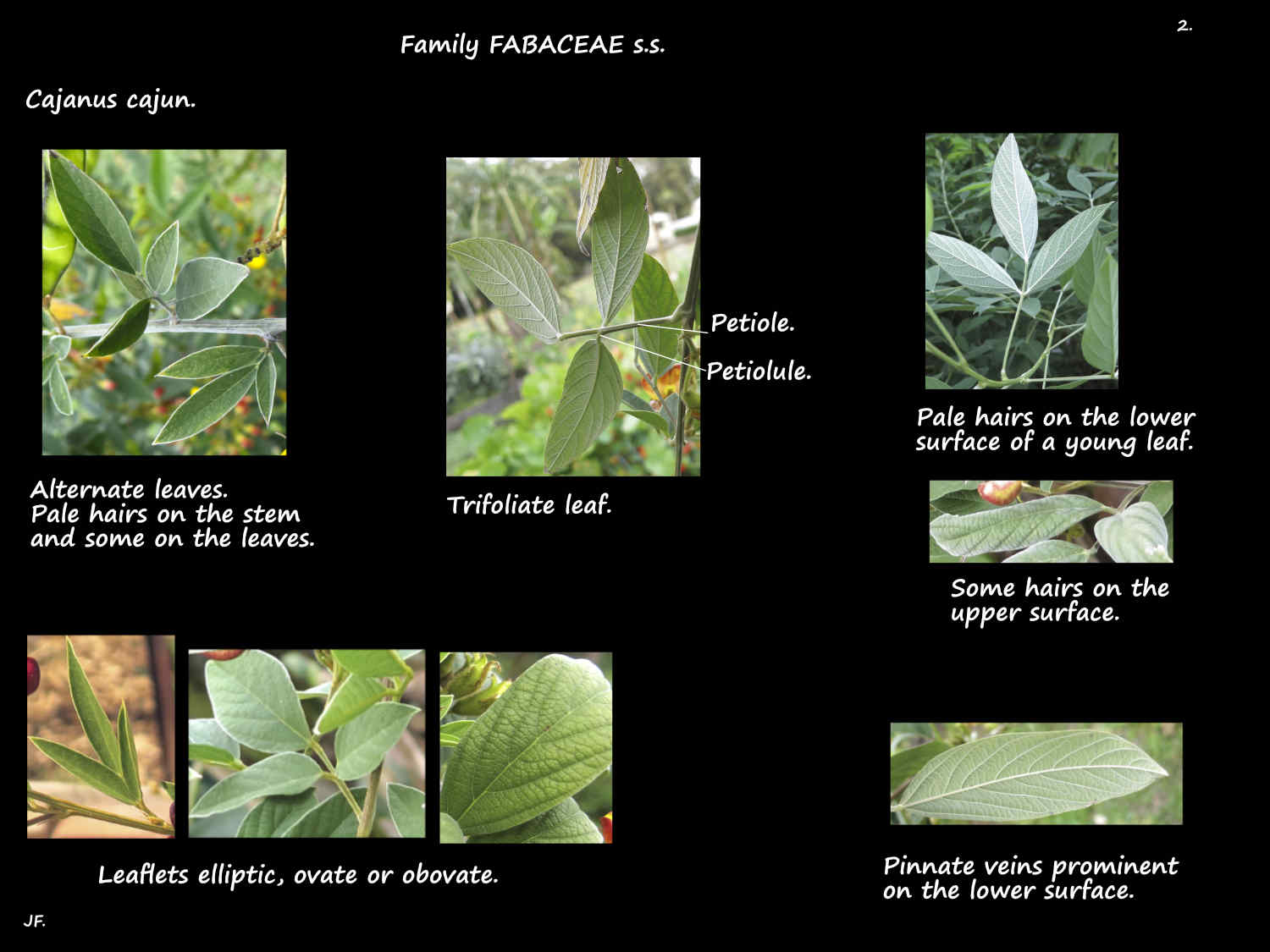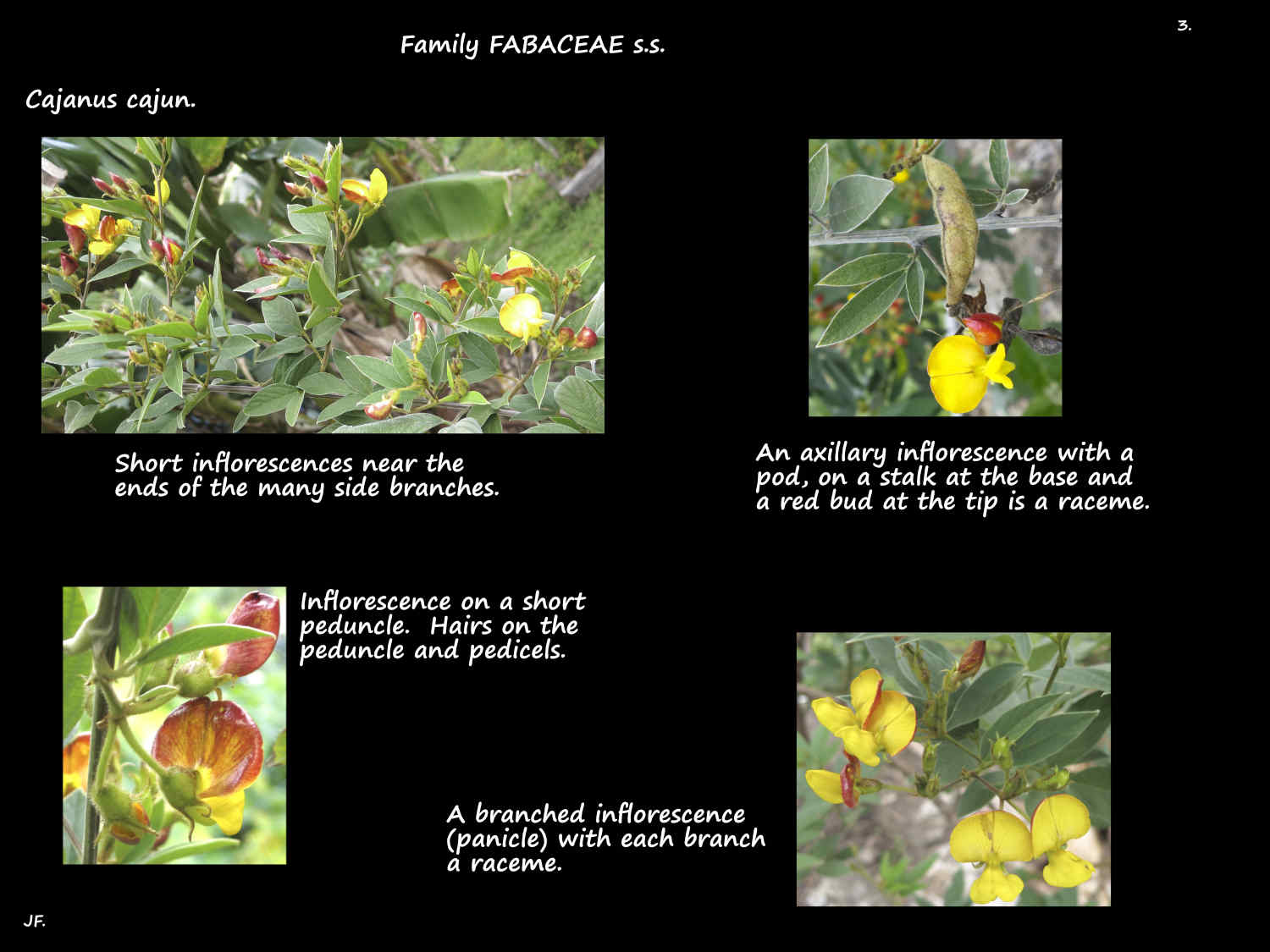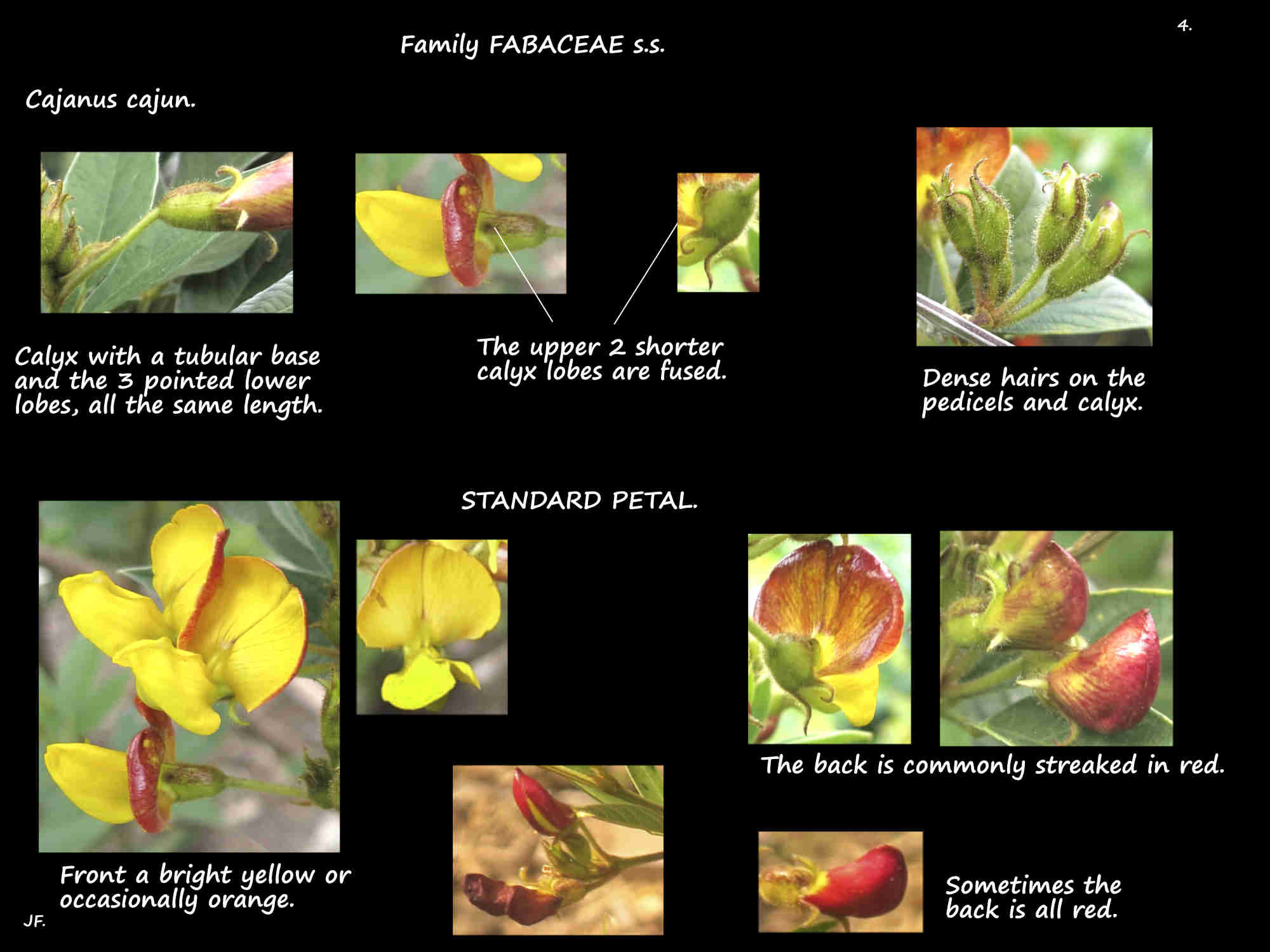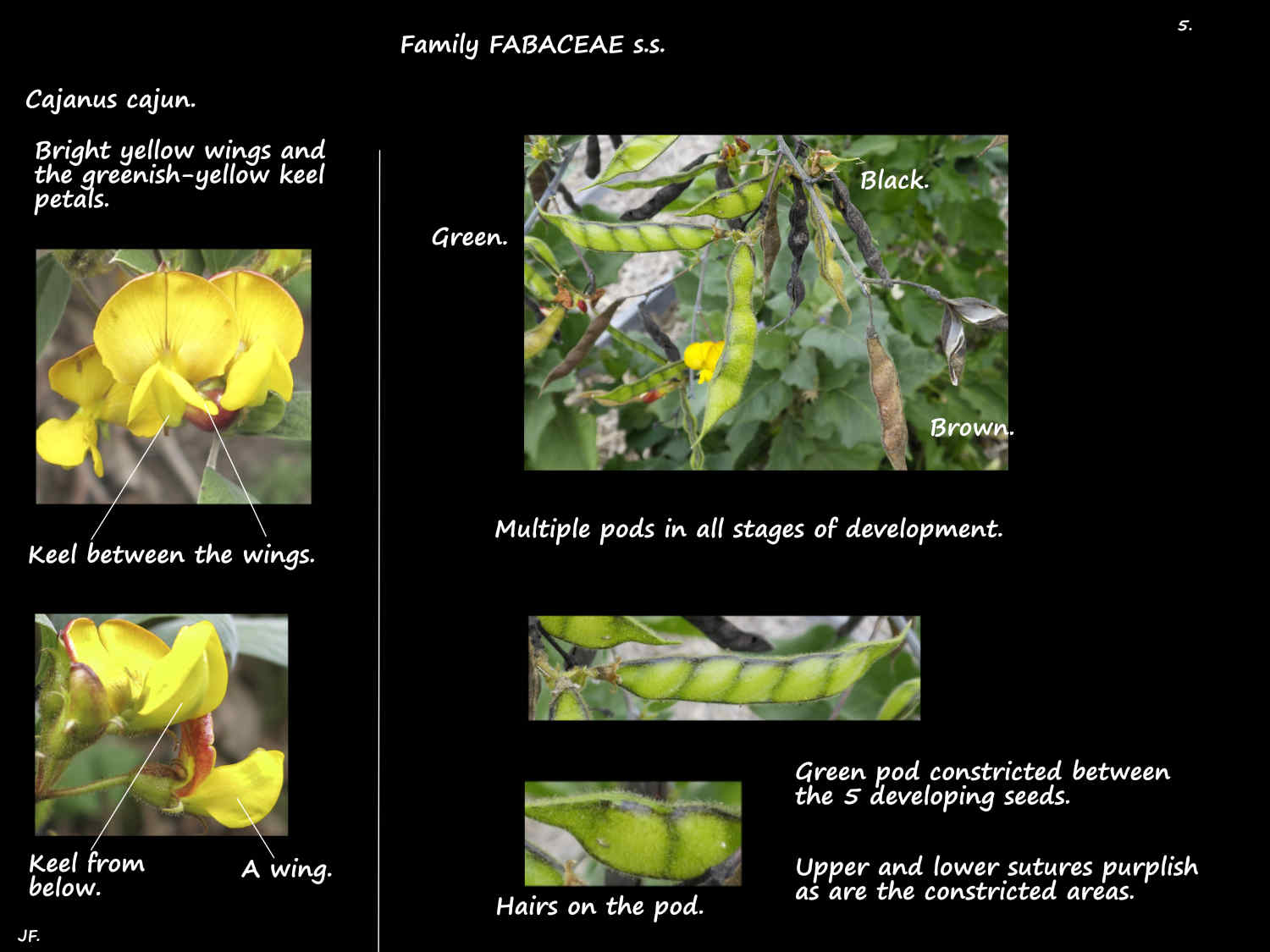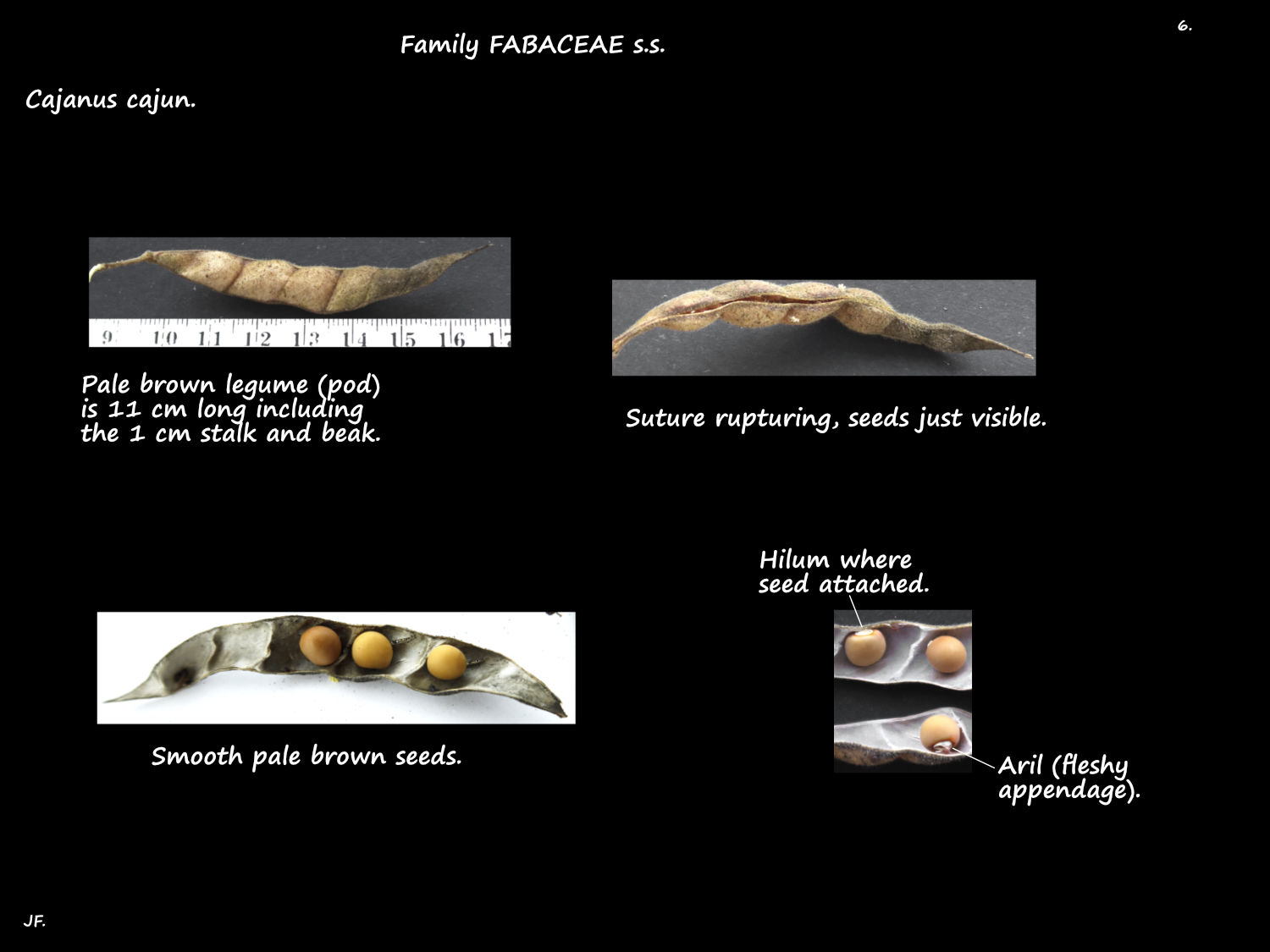The Pigeon Pea is in Family Fabaceae > Subfamily Faboideae.
Commonly cultivated it is native to India.
They are a much-branched shrub or subshrub up to 4 m high.
The taproot, with side roots can be 2 to 3 m long.
Young stems are angled and there are soft brown and yellow hairs.
The alternately arranged leaves are in a spiral.
The slightly hairy petiole, with a grooved upper surface is from 1 to around 7 cm long.
The stipules, up to 3 mm long at the base of the petiole have stiff hairs.
The 3 leaflets are on a midrib or rachis around 1 cm long.
Leaflets are on hairy angled stalks (petiolules).
The terminal leaflet has a petiolule 1 to 2 cm long.
The 2 side petiolules are only 2 to 3 mms long.
The stipels at the base of the petiolules are around 1 mm long.
The leaflets are from around 2 to 10 cm long and 1.5 to 4 cm wide.
The terminal leaflet is slightly larger than the side pair.
Leaflets are elliptic to ovate or obovate with a pointed tip.
At the tip there is usually a mucro (a short abrupt point).
The green upper surface has very fine short velvety hairs.
Longer dense whitish hairs on the lower surface make it a pale grey or white.
The small yellowish glands are most obvious on the lower surface.
The axillary inflorescences# are near the ends of the branches.
They are on a stalk (peduncle) from 2 to 7 cm long that is covered in stiff hairs.
Bracts, around 8 mm long at the base of the peduncle are deciduous.
The 5 to 10 flowers are on stalks (pedicels) 1 to 2 mm long that have stiff hairs.
The bell-shaped calyx has a 5 mm tubular base with 5 lobes 5 to 6 mm long.
The upper 2 lobes may be partly fused and all have fine hairs.
There are 5 petals with the largest being the upper standard.
Around 1.5 cm long and wide it has a narrow 2 mm long claw base.
The 2 lobes (auricles) near the base curve inwards.
The 2 side wings are around 1.4 cm long and 0.6 cm wide.
They have a 4 mm long claw base and short auricles.
The 2 lower partly fused keel petals are around 1.3 cm long and 6 mm wide.
Petals are bright yellow on the front which may have some reddish guide lines.
Its outer surface may be streaked in red or sometimes all red.
Of the 10 stamens the 6 longest have filaments around 1.5 cm long.
The upper (vexillary) stamen is free and the other 9 are partially fused into a tube.
The hairy ovary has 1 locule with a few ovules.
The thin curved style, around 12 mm long has a curved stigma.
The straight or curved oblong pod is up to around 10 cm long and 1 to 1.5 cm wide.
Pods may be constricted between the seeds.
The beak at the tip from the style is around 1 cm long.
The pods mature from green to a pale brown then black.
There are hairs and small glands on them.
The 2 to 9 oval seeds are around 6 to 7 mm long and 5 mm wide.
The very pale to dark brown or black seeds may be mottled.
#Inflorescences.
Some authorities describe them as simple spikes (racemes), others as panicles (branched) with each branch a raceme.
Flora Zambesiaca has ‘Inflorescence a terminal panicle together with numerous subcapitate axillary racemes’.
Also seen is ‘Inflorescence a terminal panicle’.
Flora of China has ‘Raceme 3-7 cm’ and others have just ‘axillary racemes’.
I have seen branched and unbranched inflorescences on the one shrub.
J.F.

